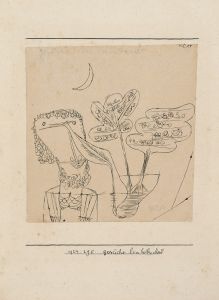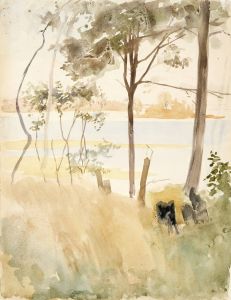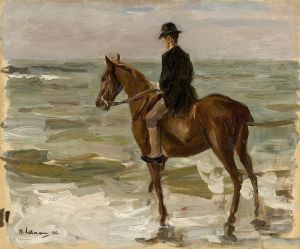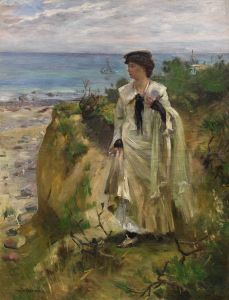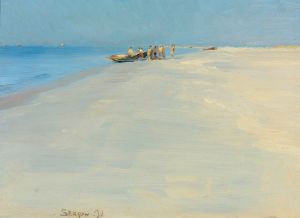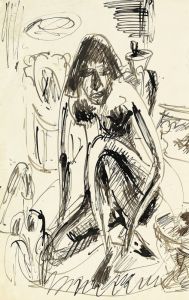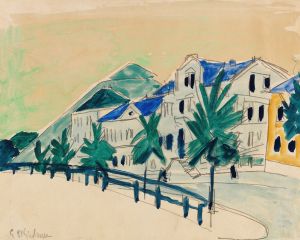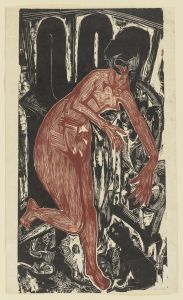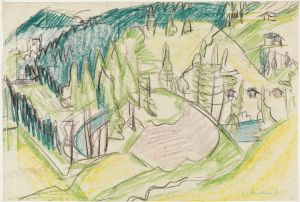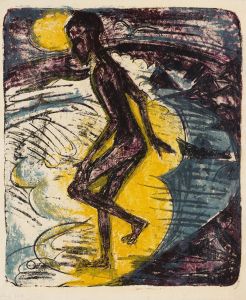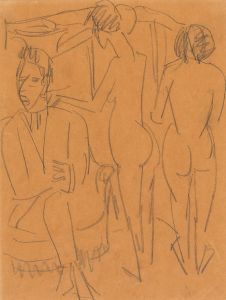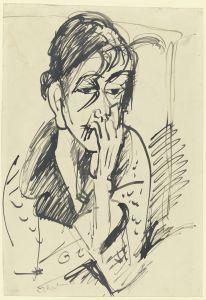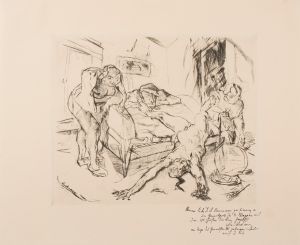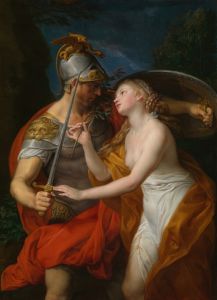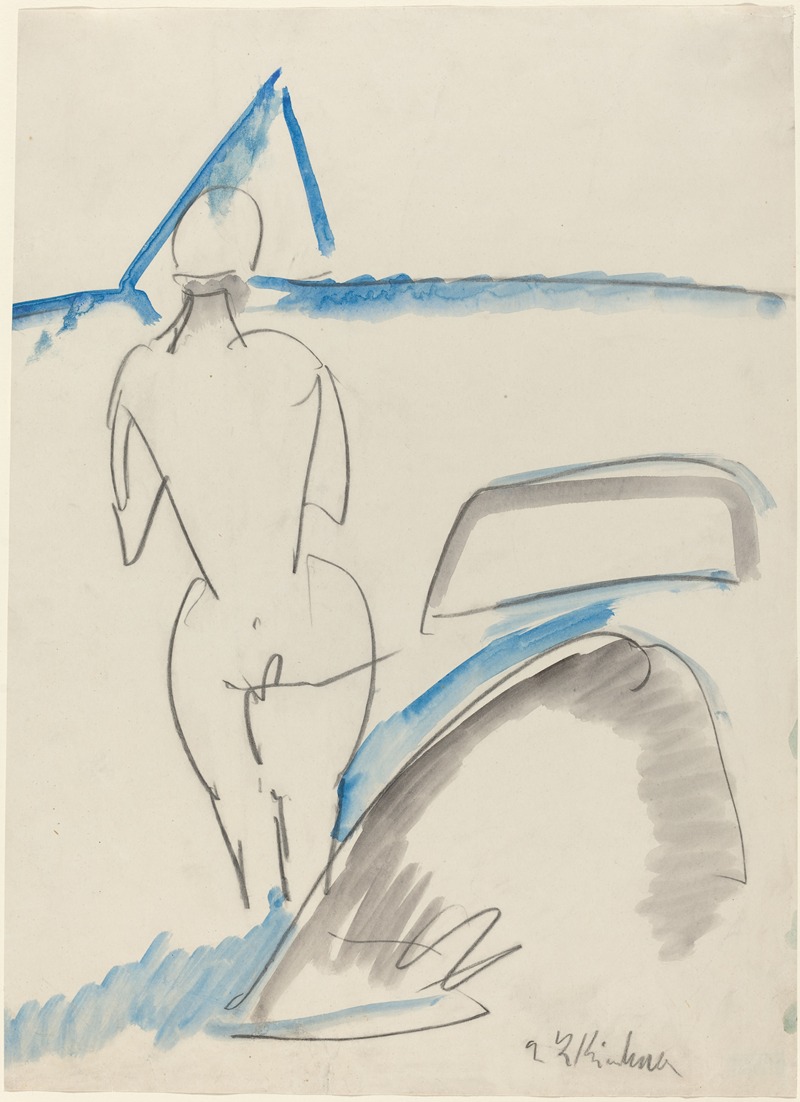
Bather on the Beach
A hand-painted replica of Ernst Ludwig Kirchner’s masterpiece Bather on the Beach, meticulously crafted by professional artists to capture the true essence of the original. Each piece is created with museum-quality canvas and rare mineral pigments, carefully painted by experienced artists with delicate brushstrokes and rich, layered colors to perfectly recreate the texture of the original artwork. Unlike machine-printed reproductions, this hand-painted version brings the painting to life, infused with the artist’s emotions and skill in every stroke. Whether for personal collection or home decoration, it instantly elevates the artistic atmosphere of any space.
Ernst Ludwig Kirchner was a prominent German expressionist painter and one of the founding members of the influential art group Die Brücke (The Bridge), which played a crucial role in the development of modern art in the early 20th century. Kirchner's work is characterized by its bold use of color, dynamic compositions, and an expressive style that sought to convey emotion and movement.
"Bather on the Beach" is one of Kirchner's works that exemplifies his interest in the human figure and his fascination with the theme of bathing, which was a recurring subject in his oeuvre. Kirchner often depicted bathers in natural settings, reflecting his desire to capture the harmony between humans and nature. This theme was also a reflection of the broader cultural movement at the time, which emphasized a return to nature and a more liberated lifestyle.
The painting "Bather on the Beach" showcases Kirchner's distinctive style, marked by vibrant colors and energetic brushstrokes. The composition typically features a figure or figures in a beach setting, rendered in a way that emphasizes their form and movement. Kirchner's use of color is particularly noteworthy; he often employed non-naturalistic hues to evoke mood and emotion rather than to depict reality accurately. This approach aligns with the expressionist movement's goal of expressing subjective experiences and emotions.
Kirchner's work was heavily influenced by his surroundings and personal experiences. During the early 1910s, he spent time in the Moritzburg Lakes near Dresden, where he frequently painted scenes of bathers. These experiences informed his artistic exploration of the human body in motion and the interaction between figures and their environment. The beach setting in "Bather on the Beach" can be seen as an extension of this exploration, where the natural landscape becomes an integral part of the composition.
Kirchner's art was also shaped by his interest in non-Western art forms, particularly African and Oceanic art, which he encountered through museum collections and exhibitions. This influence is evident in his stylized depiction of figures and the emphasis on bold, simplified forms. In "Bather on the Beach," this influence may be observed in the way the human figure is abstracted and integrated into the surrounding landscape.
Throughout his career, Kirchner faced significant challenges, including the impact of World War I and the subsequent political and social upheavals in Germany. Despite these difficulties, he continued to produce art that reflected his unique vision and commitment to expressionism. His work, including "Bather on the Beach," remains influential and is celebrated for its innovative approach to color, form, and composition.
Kirchner's legacy as a leading figure in the expressionist movement is well-established, and his paintings continue to be studied and admired for their emotional depth and artistic innovation. "Bather on the Beach" is a testament to his ability to capture the essence of human experience through the medium of paint, offering viewers a glimpse into the vibrant world he sought to portray.





